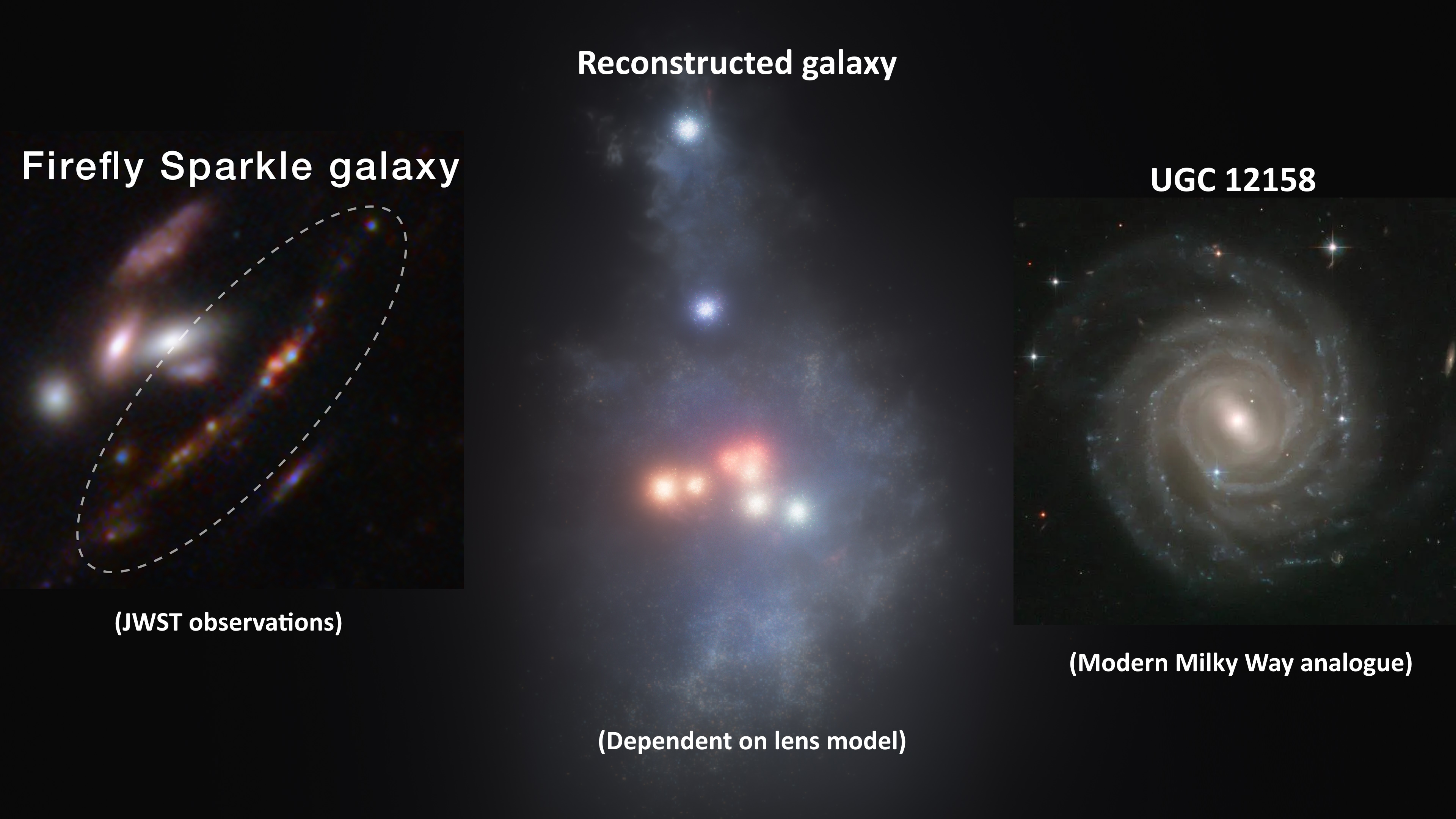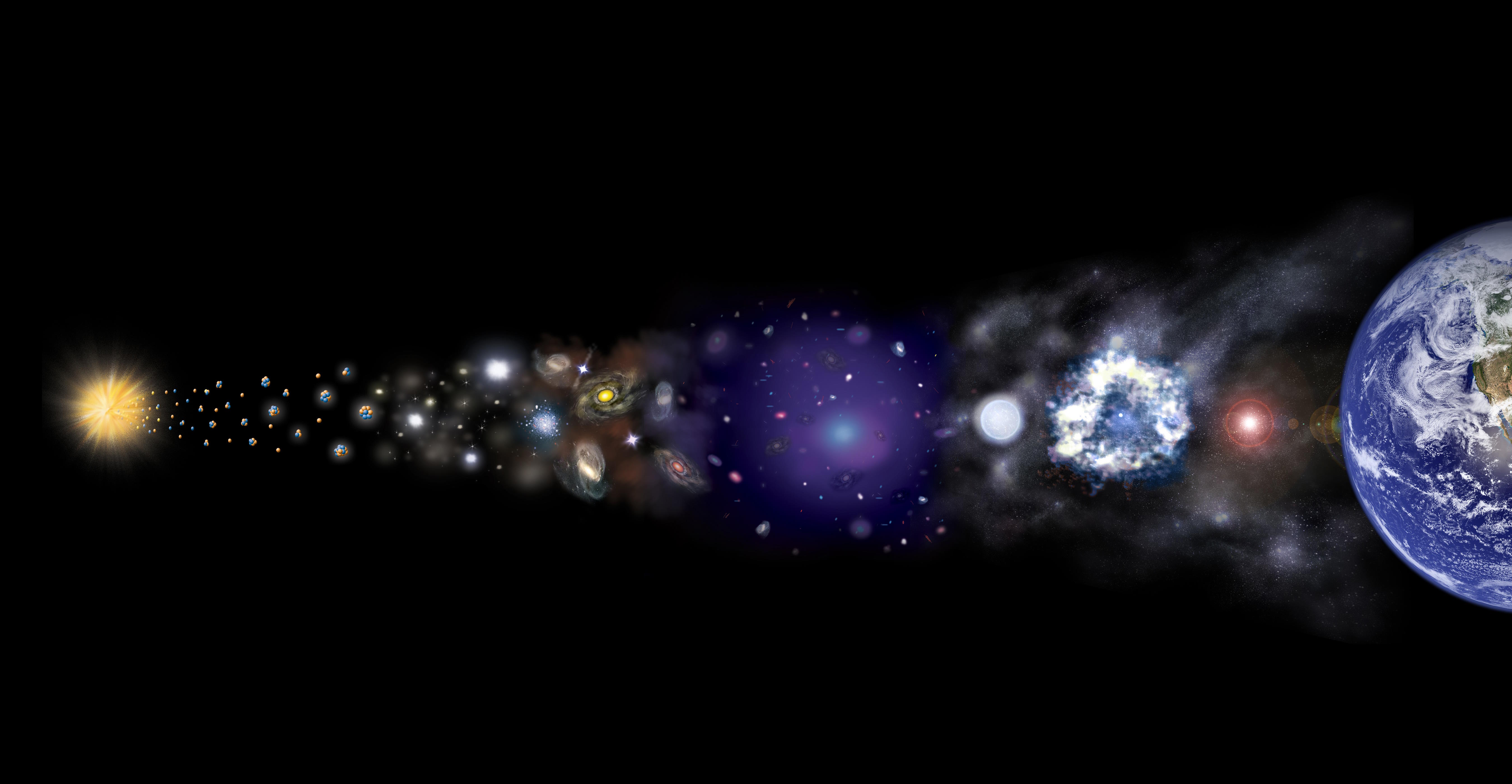Monstrous Cosmic Gas Cloud Set To Ignite The Milky Way
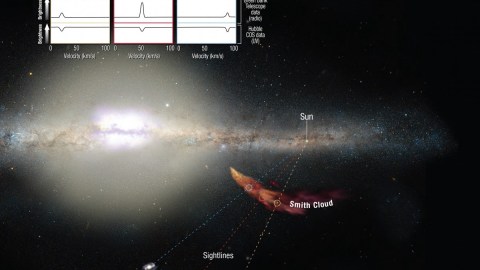
In 30 million years, we’ll undergo star formation unlike anything else since before there were mammals on Earth.
“Think about it this way — a boomerang goes out and comes back to you if you throw it. If you throw it out at the universe, it will come back down to you on Earth.” –J. B. Smoove
When we think about our galaxy, most people think about the stars in the sky, the grand, sweeping spiral arms, the disk-like plane of our Milky Way filled with dust, and the bulge in the galactic center. All of this combines to make up our run-of-the-mill home, complete with some 400 billion stars not so different from our own. And our Milky Way, visible from anyplace on Earth during a dark, moonless night, is just one of hundreds of billions of galaxies similar to it in our Universe.

Yet this one is not only our own, it contains much more than what’s visible to us. In particular, the galaxy has a huge massive halo beyond the disk. It isn’t just full of dark matter, either, but various incarnations of normal matter, including more than a hundred globular clusters (collections of hundreds of thousands of stars, all bound together within just a few tens of light years) and — very importantly — gigantic clouds of molecular gas, moving at high speeds throughout the outskirts of our galaxy. These clouds can collapse and form stars, they can pass through the plane of our galaxy and trigger new episodes of star formation, or they can gravitationally interact with other masses, including:
- infalling dwarf galaxies or tidal debris,
- globular clusters,
- other molecular clouds,
- or passing clumps of (normal or dark) matter.
The gravitational interactions are particularly interesting, because whenever you have three bodies interacting, two often become more tightly bound while the third gets a “kick,” potentially ejecting it. This is how we use planets to assist spacecrafts in their journey towards the outer Solar System, and the same principle can allow gas clouds to be ejected from our own galaxy. In one very particular, peculiar case, however, a gas cloud in our own galaxy almostgot kicked out, but not quite.
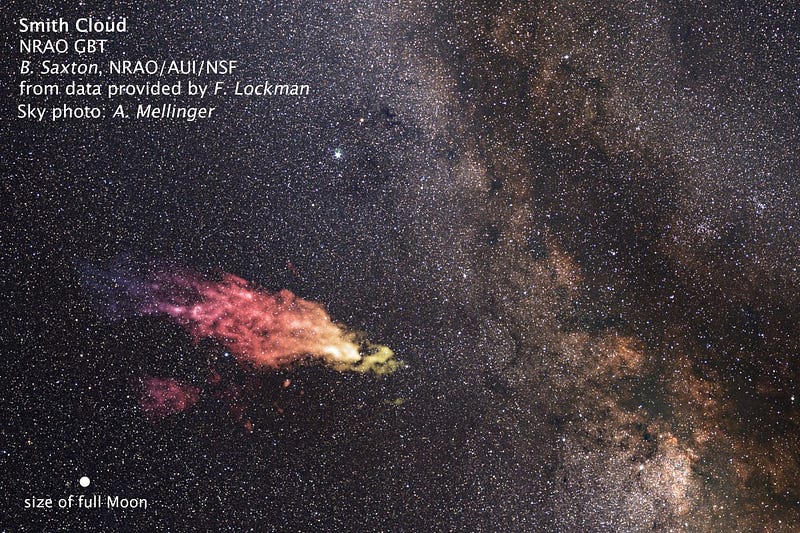
There are hundreds of high-velocity gas clouds moving at hundreds of km/s through the outskirts of our galaxy, mostly in stable orbits that keep them out of the galactic plane. They’re typically irregularly shaped, thousands of light years across, and contain many millions of times the mass of our Sun. However, one such cloud, known as the “Smith Cloud” (above), is very different from all the others. It’s much more distant, and it’s moving towards us incredibly rapidly: at about 310 km/s, or around 700,000 miles per hour. And when I say it’s moving towards us, it’s projected to collide at extreme velocities with the disk of our galaxy in about 30 million years: a long time for a human, but a very short time for our galaxy. (For comparison, it takes our Sun about 200 million years to complete a single orbit around our galactic center.) Here’s how we found this out.
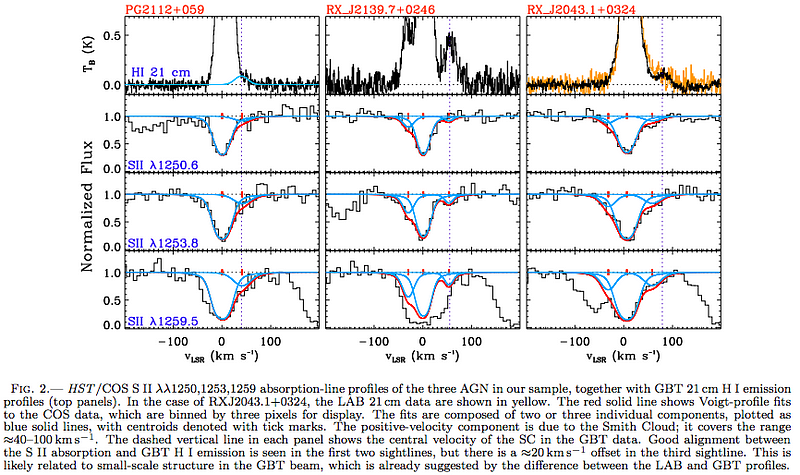
We used chemical abundance measurements (heavy element enrichment levels) and orbital calculations to conclude it has a Galactic origin. The Hubble data show that the Smith Cloud is enriched in sulfur to Milky Way-like levels. If it came from outside the Galaxy, it would have much lower levels of sulfur enrichment.
In addition, Fox was able to use the orbital dynamics of the cloud — thanks to the Hubble data — to conclude that this cloud came from our own galaxy, was “kicked” somehow to almost escape (but not quite), and is now taking the plunge under the influence of gravity back towards our Milky Way’s disk!
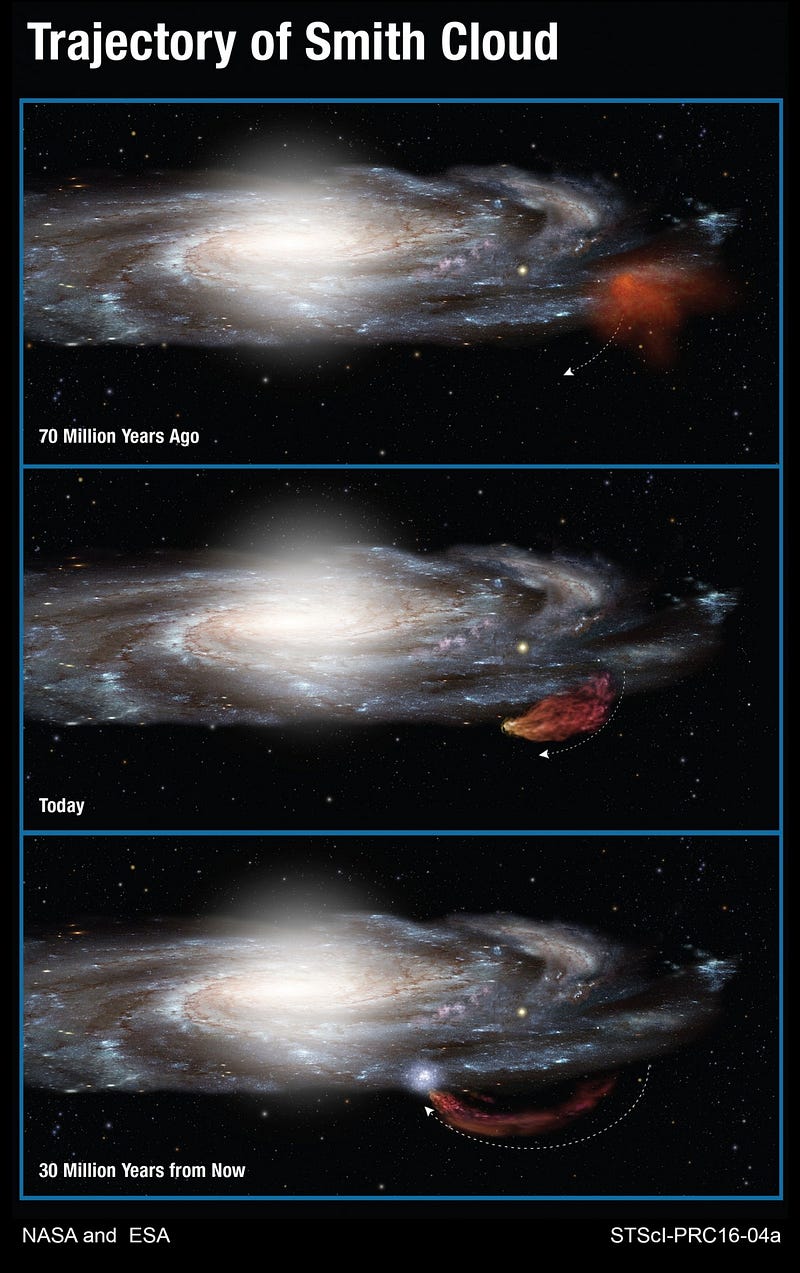
“[T]he Cloud’s orbit tracks back to the Galactic disk about 70 million years ago,” Fox continued. In 30 million years, the cloud will collide with the galactic plane, triggering an incredible star formation event. The amount of gas present in this cloud — more than 11,000 light years wide — should trigger over two million new stars in our galaxy. What causes a molecular cloud to do this? Fox isn’t sure:
However, the origin of the cloud’s high velocity is certainly a matter of debate. It could potentially be a dark matter halo that passed through the Galactic disk, accumulated gas, and continued on its journey.
No matter what the answer turns out to be, this is one of the most interesting discoveries we’ve made so far about space, and it’s not only right in our own backyard, it’s going to get much more interesting in our very near-term cosmic future.
Leave your comments on our forum, and check out our first book: Beyond The Galaxy, available now, as well as our reward-rich Patreon campaign!


